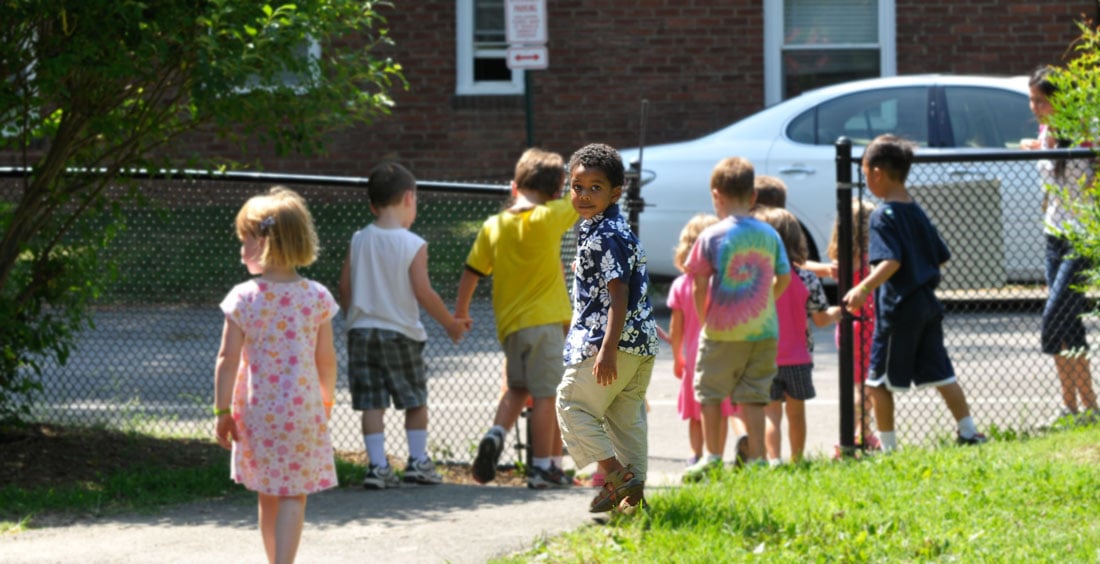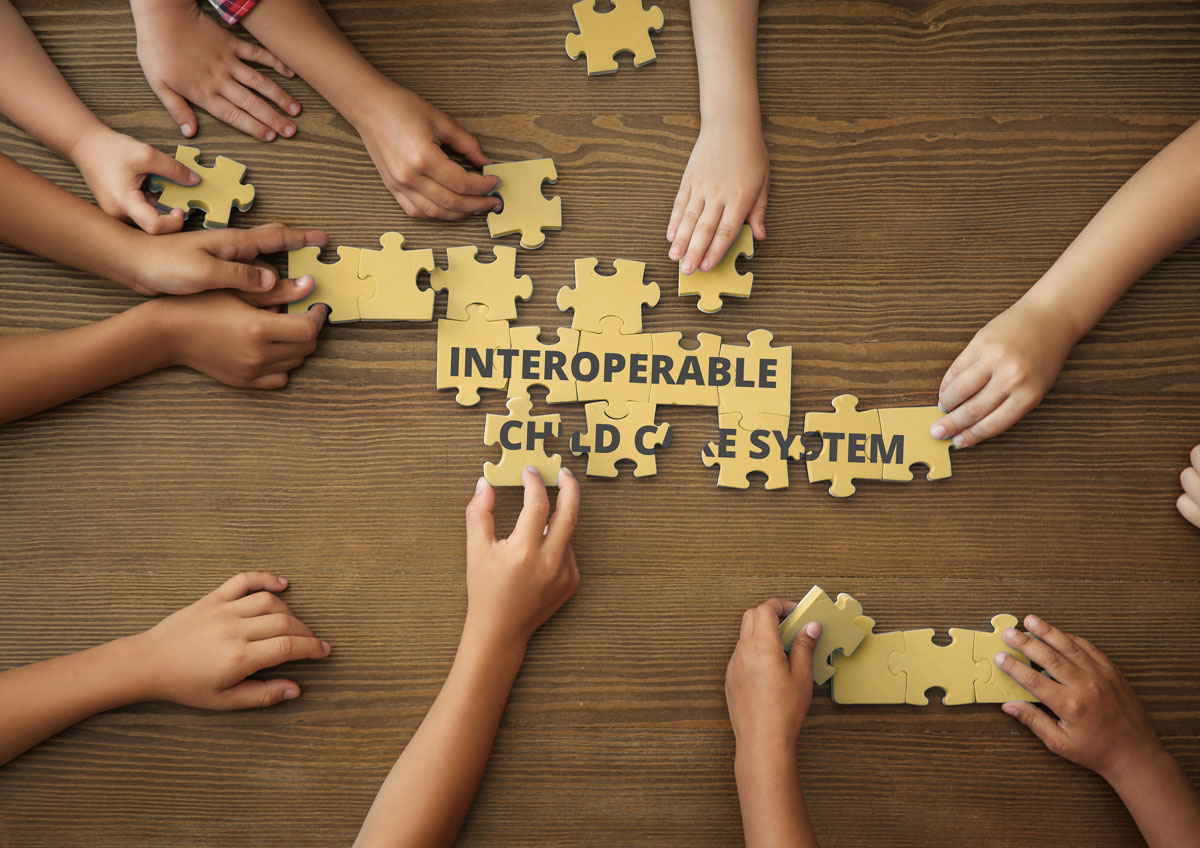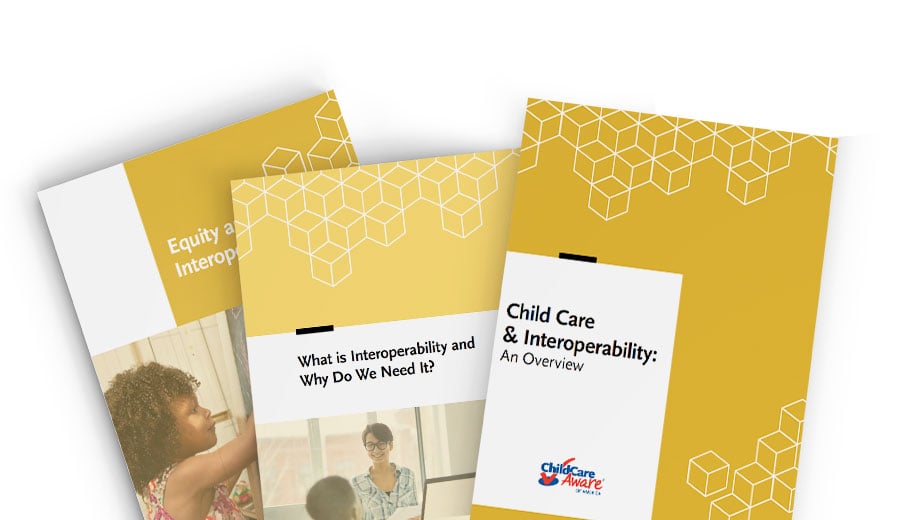
Child care is a two-generation workforce issue — with access to high-quality child care being crucial to supporting a highly skilled workforce and vital to developing our workforce of tomorrow. Child Care Aware® of America explored the child care landscape in their report, The U.S. and the High Price of Child Care: An Examination of a Broken System. They discovered our current system is:
- Fragmented: Each state has its own set of child care policies and funding operations.
- Inequitable: Children of color and children from low-income families are less likely to attend high-quality child care programs.
- Inaccessible: For many families, high-quality child care is not an option. There are not enough child care providers to meet the demand, and providers are leaving the field in record numbers. This particularly affects families of color, families living in rural areas and children with special needs.
- Underfunded: The U.S. spends less than 0.5% of its gross domestic product on child care — far less than most industrialized countries.
Child Care Challenges Specific to the Pandemic
The COVID-19 pandemic continues to expose the fragility of the American child care system. But rather than letting the pandemic further shatter the system, COVID-19 can be used as a catalyst for re-imagining our childcare system. As we look forward to a post-COVID future, it is necessary to create sustainable solutions to respond to the inadequacies in our child care system, both for families and businesses. And, with 50% of working parents who have not yet returned to work citing child care as a reason, reconceptualization is more important than ever.
Public-private Partnerships Creating Innovative Solutions
Public-private partnerships, like those between Child Care Resource & Referral agencies (CCR&Rs) and chambers of commerce, and the fruits of their collaboration can serve as prime examples of innovative solutions. Moreover, the solutions created between their collaboration have been particularly necessary during the pandemic.
For example, at the beginning of the pandemic, child care centers in Lawrence, Kansas, were struggling to locate cleaning supplies, such as hand sanitizer, that they needed to safely operate. A solution was formed through a partnership between Child Care Aware® of Eastern Kansas and the Lawrence Chamber of Commerce. The Lawrence Chamber of Commerce, who heard about the need facing child care centers in their community, reached out to the Kansas University School of Pharmacy, who had the capability and willingness to produce the much-needed hand sanitizer. The Child Care Aware® of Eastern Kansas staff reached out to every licensed child care program in the community to gather information about their needs, and, with permission, shared that data and the program addresses with the School of Pharmacy. This collaborative effort provided 38 child care programs with free supplies of hand sanitizer, serving 243 children in the community.
Looking Ahead
Looking to the future, if the COVID-19 pandemic is not used as a catalyst to re-imagine our current childcare system, it will remain fragmented, inequitable, inaccessible and underfunded. But there is hope. With 92% of CCR&Rs already participating in partnerships or initiatives to identify and develop strategies to address gaps in services and systems,[1] there is already an established framework for collaboration that can meet the needs of communities nationwide.
Moreover, with more than 400 agency locations nationwide, CCR&R agencies are able to reach and meet the needs of historically under-resourced communities. With most child care deserts existing in low-and middle-income communities, including predominantly BIPOC neighborhoods and rural America[2], collaborations between CCR&R agencies and chambers of commerce may provide those communities with the increased access to high-quality child care programs that they need. These partnerships would be able to increase access through providing parents with information about child care options, working directly with families who receive assistance or have other unique needs, and ensuring child care programs have the tools they need to provide high-quality care.
It is possible to pick up the pieces of a broken system, piece by piece, and build the equitable, robust system our workforce deserves.
[1]“THE US AND THE HIGH PRICE OF CHILD CARE,” 2020.
[2] Rasheed Malik, Katie Hamm. “The Coronavirus Will Make Child Care Deserts Worse and Exacerbate Inequality.”.
 Yvanna Cajina is an intern at the U.S. Chamber of Commerce Foundation’s Center for Education and Workforce, and is currently a student at Florida International University’s Landon Undergraduate School of Business, working towards a B.B.A. in International Business.
Yvanna Cajina is an intern at the U.S. Chamber of Commerce Foundation’s Center for Education and Workforce, and is currently a student at Florida International University’s Landon Undergraduate School of Business, working towards a B.B.A. in International Business.





